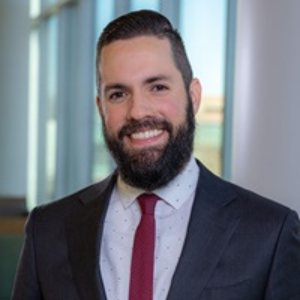Returning to moderate to vigorous physical activity (MVPA) after a concussion may play a vital role in helping teens feel less anxious while recovering from the injury, according to a new study from researchers in the Department of Orthopedics at the University of Colorado School of Medicine.
Experts estimate around 20% of adolescents have been diagnosed with at least one concussion in their lifetime. Managing symptoms — which can be physical, cognitive, and emotional — is important and means learning more about how mental health can lead to better health outcomes after concussion.
“Independent of concussion, people who exercise more tend to have less anxiety, so it's not surprising that the same thing would be seen after concussion,” says Katherine Smulligan, PT, DPT, and PhD candidate, lead author of the study.
She and her colleagues at the Colorado Concussion Research Laboratory say patients commonly believe that they should be sedentary and avoid physical activity altogether after experiencing a concussion, but a growing body of research points to that not being necessary in many cases.
While the researchers say that post-concussion anxiety is multifactorial and physical activity isn’t the only variable that influences mental health, they observed a correlation between more time spent in MVPA during the recovery process and less self-reported anxiety symptoms at a follow-up evaluation.
“MVPA performed in the subacute period after concussion predicted lower self-reported anxiety ratings at a follow-up,” they write in their findings published in the journal Medicine and Science in Sports and Exercise. “…A higher intensity of physical activity than is frequently prescribed as standard-of-care during concussion recovery may be beneficial for those experiencing anxiety symptoms after concussion.”
Why anxiety matters
Researchers have previously observed an association between mental health problems in adolescents and concussion, although the cause/effect relationship is not known. This new paper may act as a guideline to help prevent potential post-concussion anxiety by showing that returning to exercise can have benefits.
“If you're a high school athlete and you’re used to exercising a moderate to vigorous level every day without a concussion and you’re put in a dark room to rest, you may be anxious, drowsy, or have trouble sleeping because of that activity modification,” says David Howell, PhD, ATC, associate professor of orthopedics and director of the Colorado Concussion Research Laboratory. “A teen’s whole life may be uprooted, so we honed in on what happens in this situation when a concussion is part of the equation.”
Addressing anxiety in the concussion recovery process can have an impact on schoolwork, relationships, and general well-being. Researchers also acknowledged that concussion can intensify mental health issues that existed before the injury. These patients are “more likely to develop persistent symptoms compared to those without a pre-injury anxiety history.”
“As such, interventions to help manage anxiety may be beneficial in promoting recovery and improving mental health outcomes after concussion,” the researchers write.
Uncovering new evidence for better care
There’s still more research needed to determine exactly how much physical activity is most beneficial for recovery and how soon patients should return to moderate to vigorous exercise.
The 48 participants in the study were given wrist-worn activity monitors to track their physical activity, but not specific recommendations on what kinds of exercise they should do. That guidance was left to the participant’s treating physician. Researchers tracked MVPA based on percentage of age predicted max heart rate recorded by the monitor.
On average, for every hour engaged in MVPA during the activity monitoring week, anxiety scores according to the PROMIS anxiety T-score decreased by 5.3 points.
“The biggest questions to focus on next is to what intensity should a person exercise after a concussion, and how much and how soon,” Smulligan says. Currently, care standards recommend one to two days of rest following the concussion.
“There is so much in the body that can be affected by concussion, and everybody experiences symptoms a little differently, so it can be hard to study,” Howell adds. “That means we must design studies that focus on understanding specific relationships and associations in a rigorous manner. Over time, when we do enough studies, we can begin to replicate findings and put a whole story together that can help inform best practices and standard of care.”






